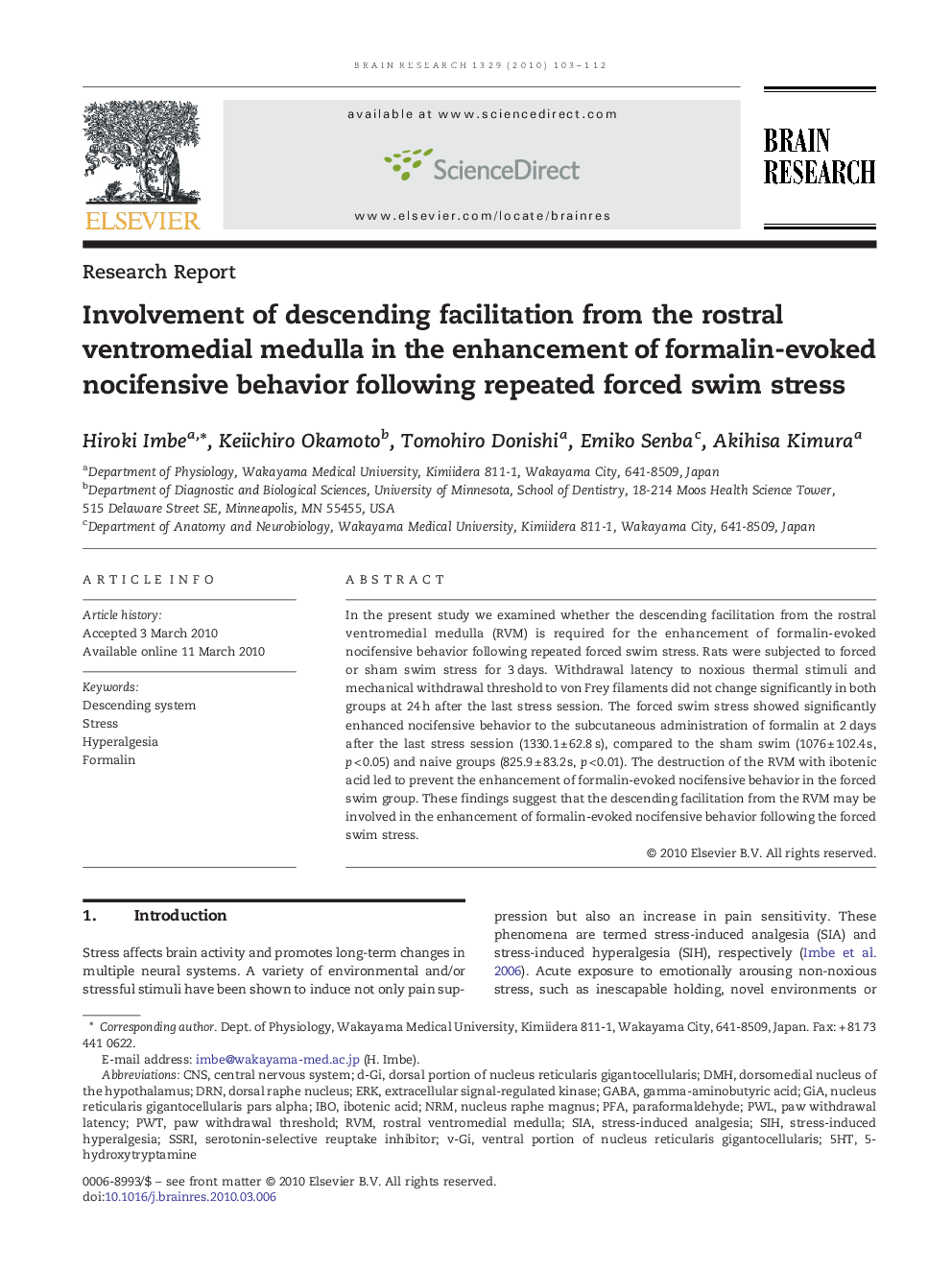| Article ID | Journal | Published Year | Pages | File Type |
|---|---|---|---|---|
| 4327100 | Brain Research | 2010 | 10 Pages |
Abstract
In the present study we examined whether the descending facilitation from the rostral ventromedial medulla (RVM) is required for the enhancement of formalin-evoked nocifensive behavior following repeated forced swim stress. Rats were subjected to forced or sham swim stress for 3 days. Withdrawal latency to noxious thermal stimuli and mechanical withdrawal threshold to von Frey filaments did not change significantly in both groups at 24 h after the last stress session. The forced swim stress showed significantly enhanced nocifensive behavior to the subcutaneous administration of formalin at 2 days after the last stress session (1330.1 ± 62.8 s), compared to the sham swim (1076 ± 102.4 s, p < 0.05) and naive groups (825.9 ± 83.2 s, p < 0.01). The destruction of the RVM with ibotenic acid led to prevent the enhancement of formalin-evoked nocifensive behavior in the forced swim group. These findings suggest that the descending facilitation from the RVM may be involved in the enhancement of formalin-evoked nocifensive behavior following the forced swim stress.
Keywords
SIHIBOSIANRMPWLERKGIADMH5-hydroxytryptaminePFARVMDRNPWT5HTpaw withdrawal thresholdStressibotenic acidgamma-aminobutyric acidstress-induced analgesiapaw withdrawal latencyCNSrostral ventromedial medullacentral nervous systemdescending systemFormalinSSRInucleus raphe magnusdorsal raphe nucleusdorsomedial nucleus of the hypothalamusStress-induced hyperalgesiaparaformaldehydeHyperalgesiaextracellular signal-regulated kinaseGABA
Related Topics
Life Sciences
Neuroscience
Neuroscience (General)
Authors
Hiroki Imbe, Keiichiro Okamoto, Tomohiro Donishi, Emiko Senba, Akihisa Kimura,
